I’m a fan of “big art” – sculptures that fill entire rooms, take up your entire scope of vision, and make you lose yourself inside of. So when I heard about the Renwick Gallery’s Wonder exhibition, I knew we had to go. Nine rooms, each featuring a thematically and physically large piece designed to provoke wonder, hit all of my aesthetic buttons. While bringing a little kid to an art museum is always a bit of a crapshoot, I hoped that Sprout would enjoy it as well.
Arriving at the museum on Saturday, we found that we were in luck – we happened to come on the Smithsonian art museums’ Family Fun Day. While people have generally been welcoming when we’ve brought him to art museums in the past, this just added an extra layer of normalcy and acceptance.
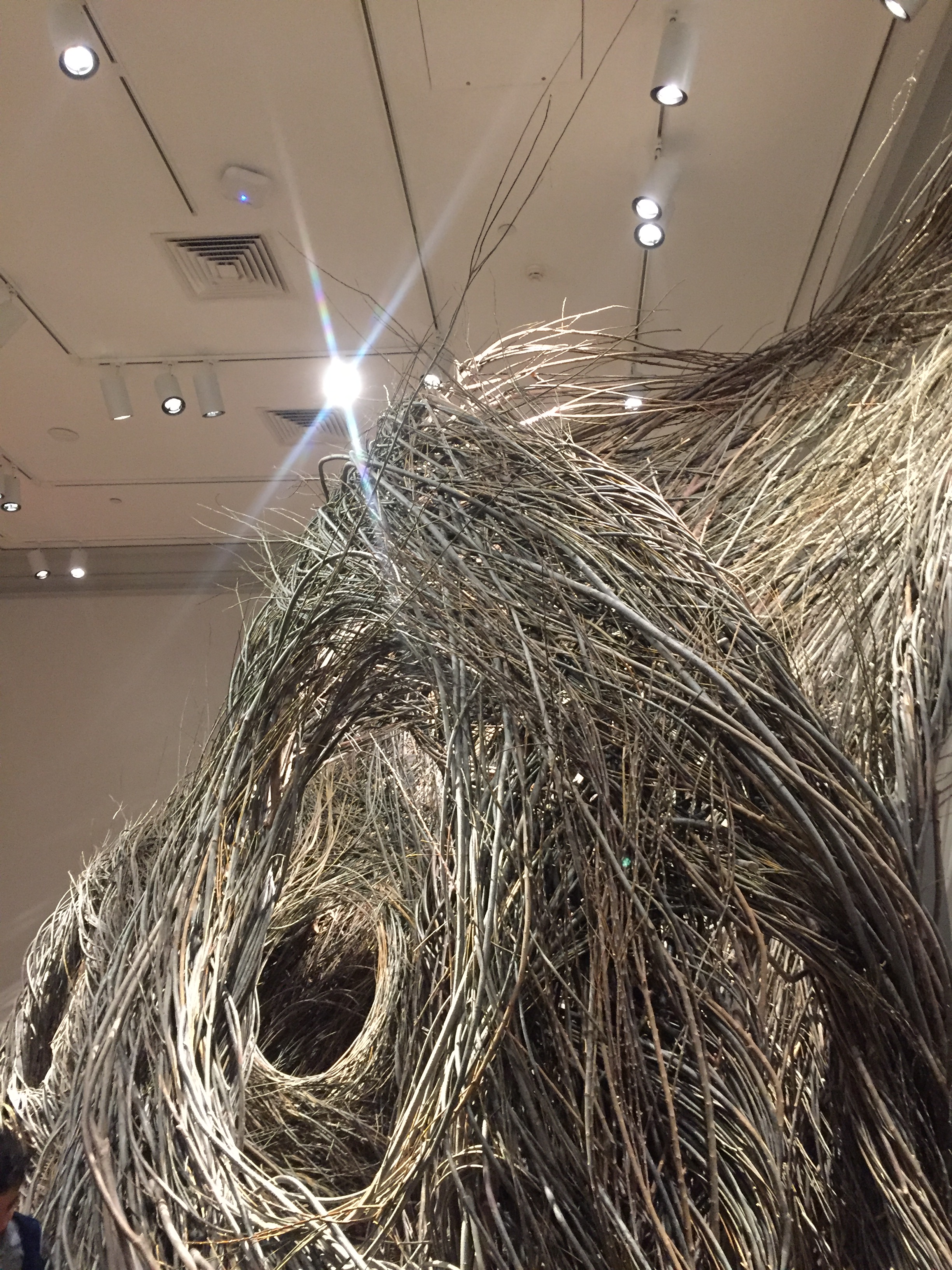
From the museum’s formal lobby, we entered the first room, filled with sculptures crafted out of sticks collected from the forest floor. Weaving our way around, it evoked the feeling of being somewhere ancient, hidden and enchanted. It was a fairy tale wonderland, a place where gnomes or huge, intelligent birds might make their home. In fact, we actually used children’s stories to relate it to Sprout. We remarked, “This is what Big Bird’s nest might be like!” and “Doesn’t this remind you of the second house in the Three Little Pigs?” (Although he might not have fully understood the point of that story – he said he would like to live in a house made of sticks. Of course, if they were this lovely, perhaps I would too.)
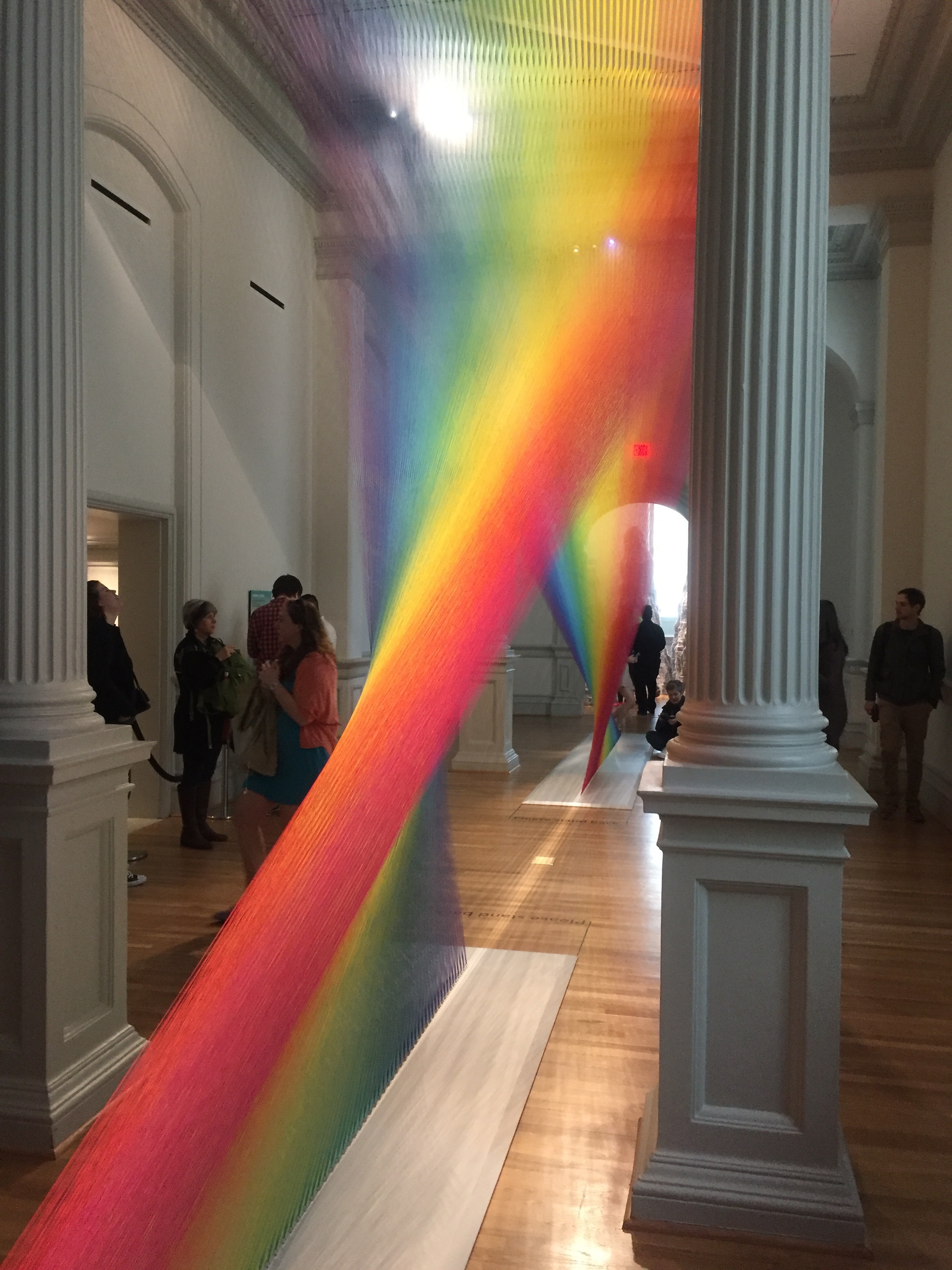
The real-life counterpart to the second room was both more immediately obvious and ethereal. “Rainbow!” Sprout exclaimed. Colors arched across the room, shimmering as you walked past them. Wispy strings, nearly imperceptible individually, ran from the floor to the ceiling and back to the floor. Sprout walked around it, gazing all the while, then asked for Chris to pick him up so he could see it better. At the end of the day, he declared it was his favorite one. Chris and I had to agree.
Sprout was at an experiential disadvantage in the following room, as the sculptures suggested stalagmites or the Bryce Canyon hoodoos, neither of which he’s seen in person. Nonetheless, the index card-built “rocks” were surreal enough to spark his interest, especially as we peered through them to the other side of the room.
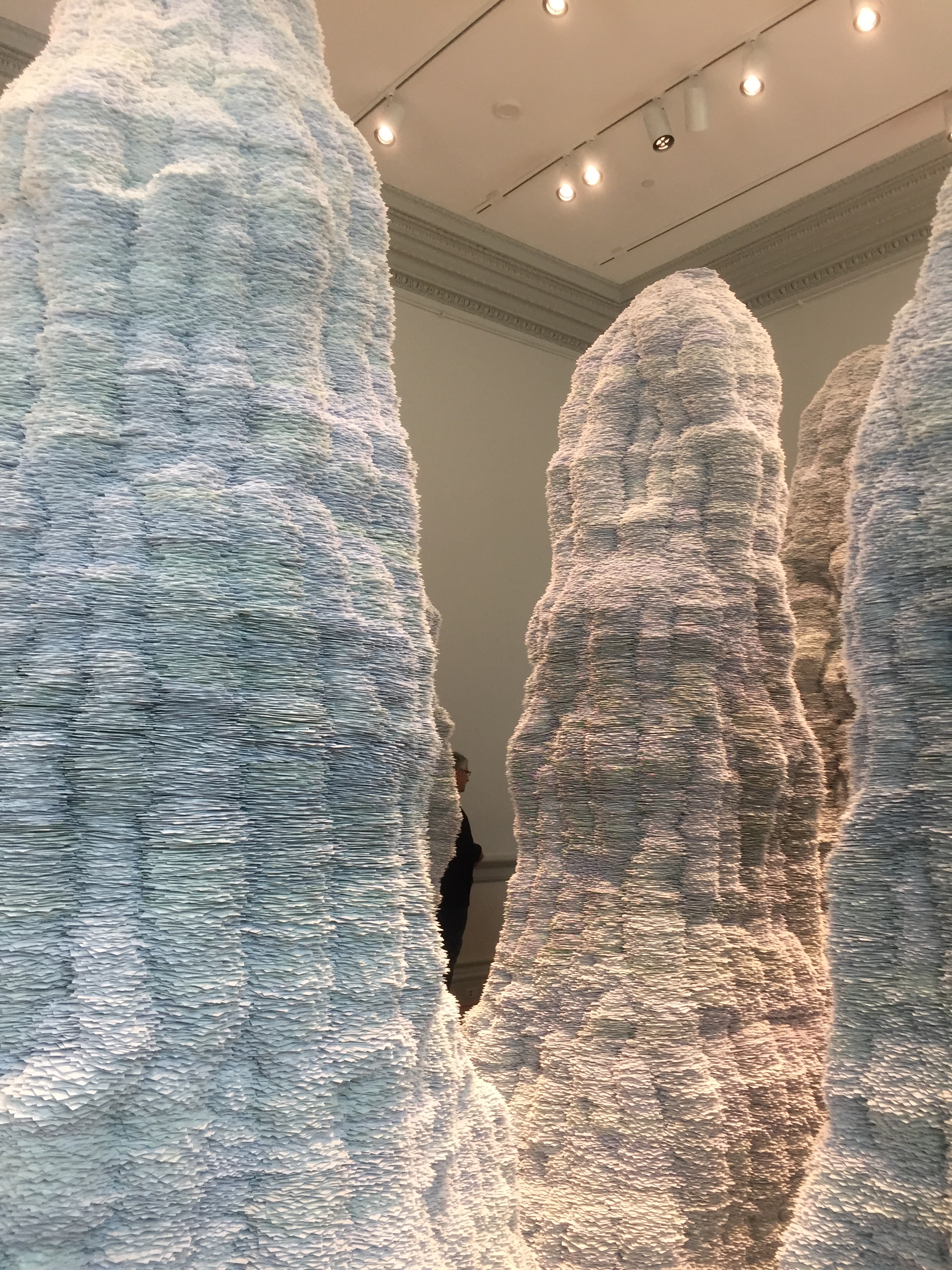
Climbing up an elegant, carpeted stairway, we encountered the next sculpture immediately above us. From the ceiling hung pieces of mirrors embedded with LED lights programmed to flash at intervals that never repeated. The room’s lights dimmed and brightened, creating a dance of light evoking sunsets and shooting stars. It reminded me of Multiverse at the National Gallery, but less Space Mountain and more actual space. (Looking at the gallery program as I write this, I see this commonality is not a coincidence – it’s the same artist.) Leaning against the marble balustrade, I gazed at the patterns of sparkling lights.
On the second floor, I also ran into a pregnant woman’s nemesis – an overly enthusiastic janitor. He informed me, “I’m about to start maintenance on the bathroom.” You couldn’t wait five minutes for a woman who is ginormously pregnant?
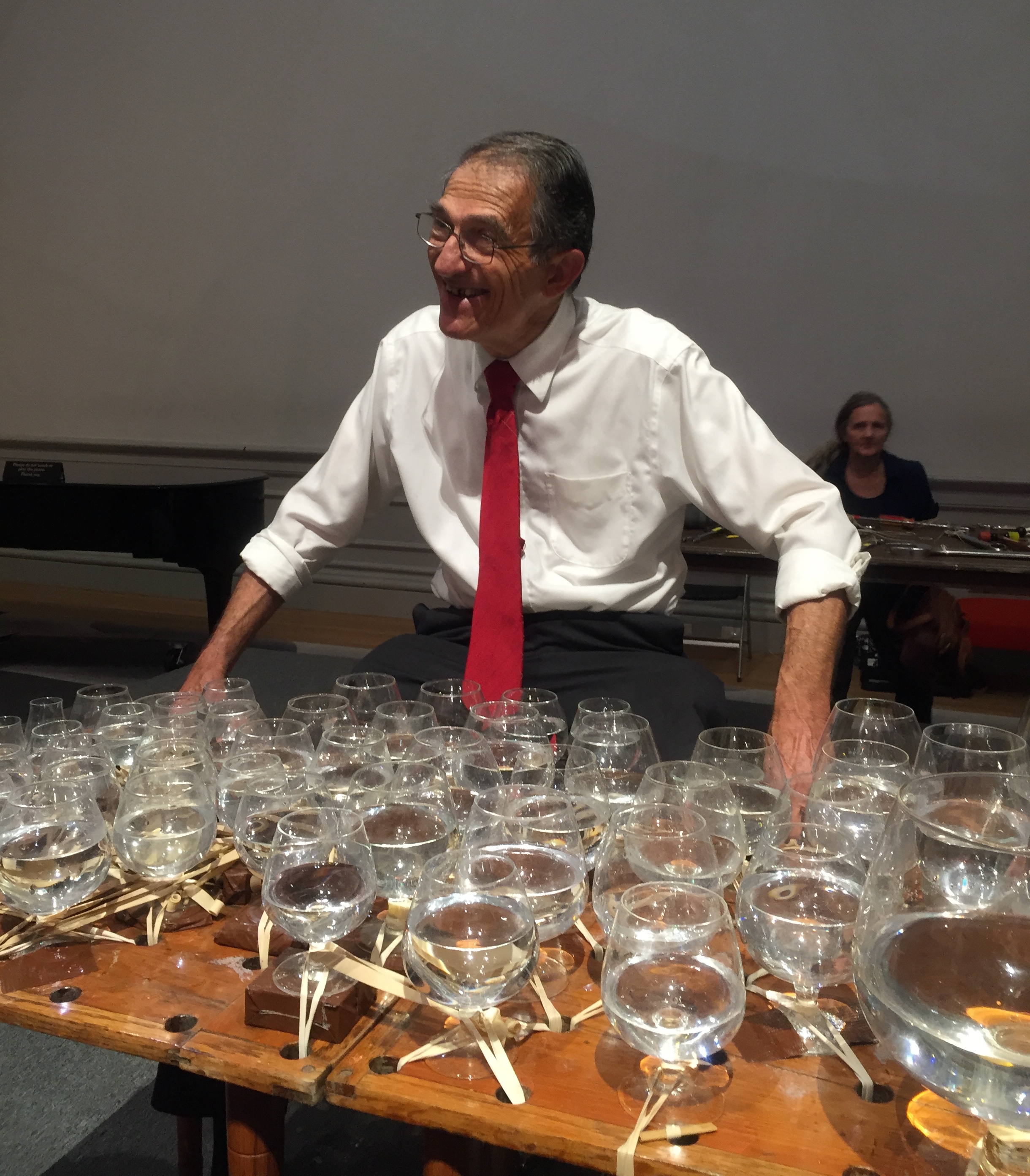
Thankfully, we had a lovely distraction in a gentleman playing the glasses in the next room over. That’s right – wine glasses. He had a sound board with about 40 wine glasses tethered to it with rubber bands. With a graceful series of swipes of his hands, he played the clearest, highest notes I’ve certainly ever heard from a set of kitchenware. (And prettier than many “normal” instruments.) After he finished the official concert, I scurried off to the bathroom and Chris went up with Sprout to talk to the musician. On top of teaching us that Beethoven wrote music for the glasses, the musician played a short rendition of Twinkle Twinkle Little Star specifically for Sprout. The rest of the day, Sprout repeated, “He played Twinkle Twinkle on the glasses” with awe in his voice.
Up next – waiting in line. Because the sixth sculpture took up almost the entire room, it created a substantial bottleneck. Fortunately, we had a lot to look at. One of the exhibits hung above us, a multi-colored net undulating in waves. It was actually an adaptation of the modeled energy release of the Japanese tsunami, the colors corresponding to different energy intensities. Wonder, beauty, destruction and terror can all exist simultaneously.
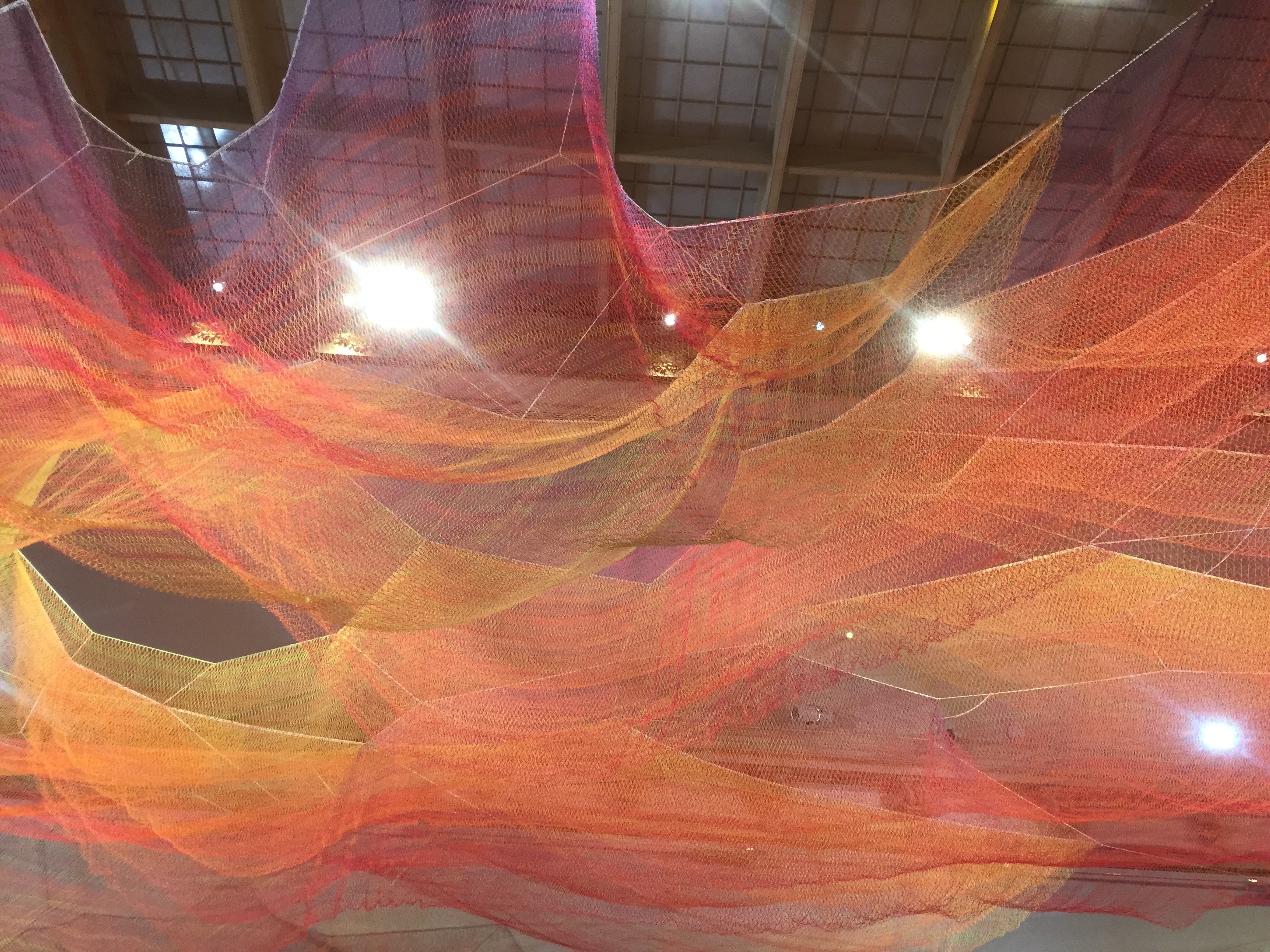
On the stage, there was a talented Indian dancer whose ability to spin slowly while standing on one foot astounded me. But then, I have trouble holding tree pose while standing as still as possible. We watched her flow to the music, full of percussion instruments.
After 10 minutes of waiting – which feels much longer with a toddler – we entered the next room. It was dominated by a sculpture of a tree on its side, with barely any room to walk through. The artist took a mold of a real 150 year old tree and then recreated it with tiny wooden pieces. From the hollow truck to the reaching branches, it felt oddly familiar and unnatural at the same time. Sprout knew it was a tree right away and quickly caught on that it was made of little tiny pieces of wood. That mix of known and odd caught his attention, even thorough he neither knew or cared about the deeper messages about ecology and natural systems.
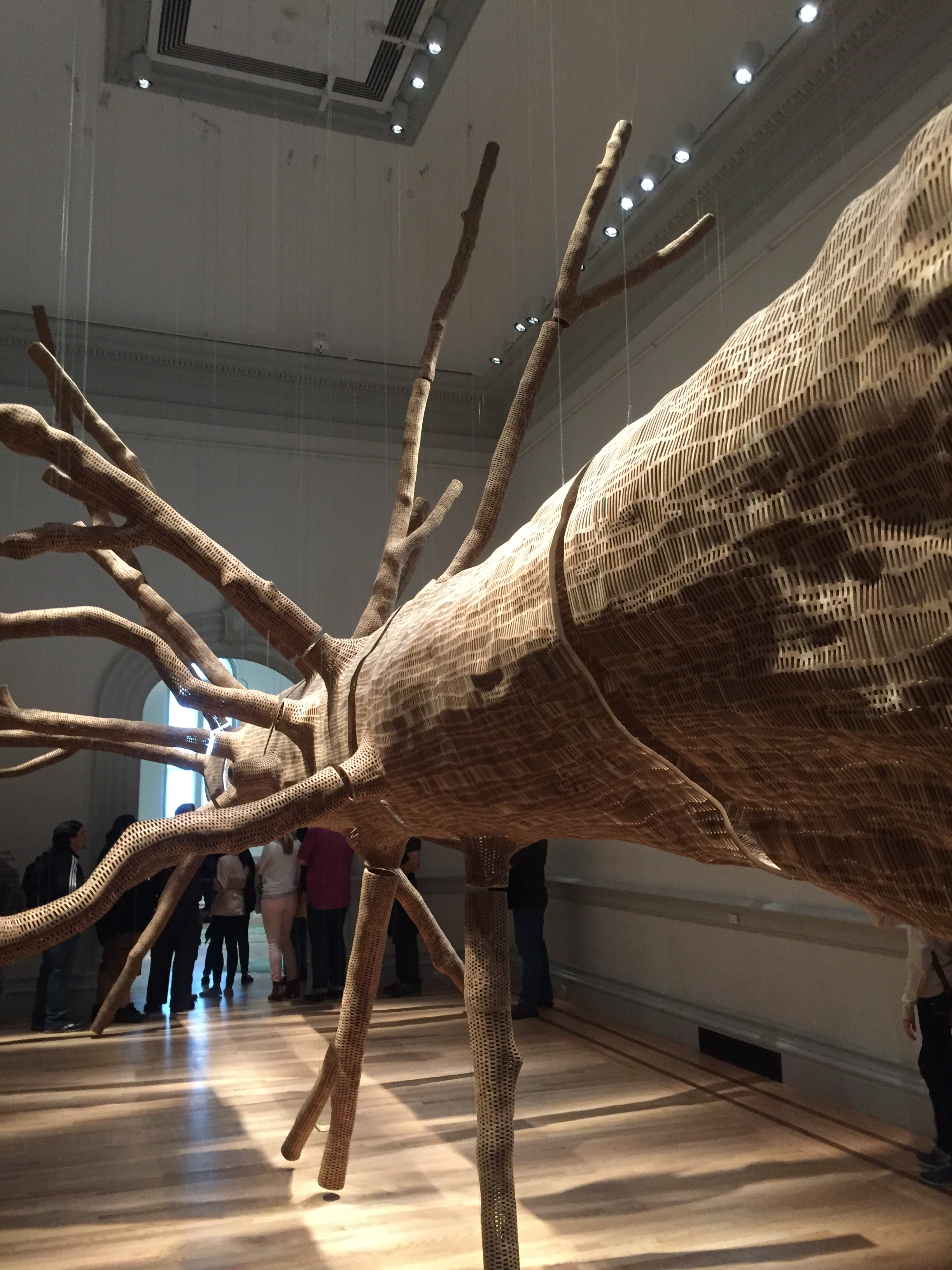
The last three rooms were our least favorite. A map of the Chesapeake Bay made of glass marbles by the designer of the Vietnam Veterans Memorial was more conceptually than visually interesting. Fences made of shredded tires weren’t aesthetically pleasing or had any deep meaning to me.
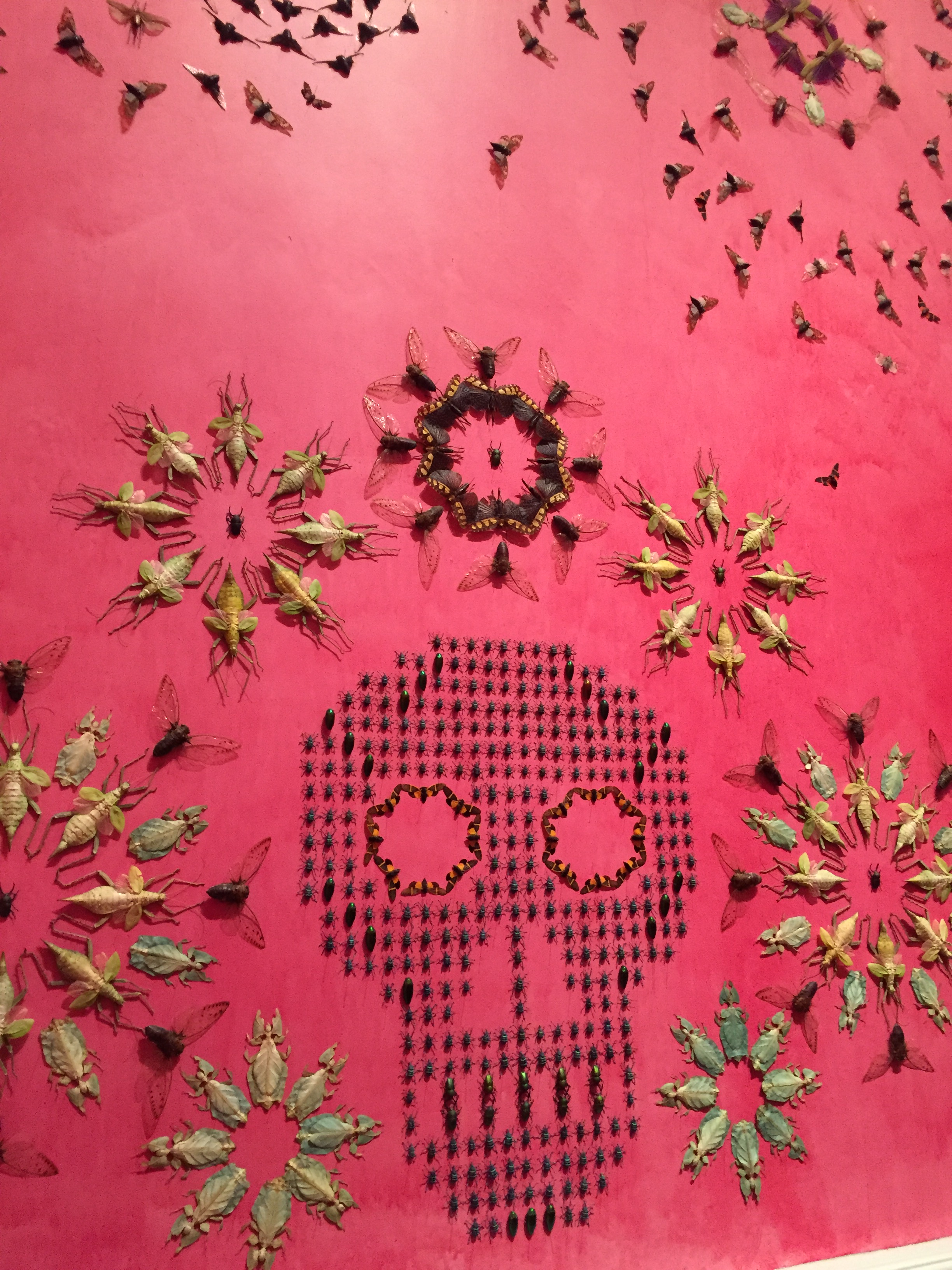
The last room was perhaps a little too gross for me to enjoy, but was at least fascinating. As Sprout pointed out, there was a bee’s nest in the middle of the room. More strikingly, the room’s walls were covered in dead bugs, arranged in patterns and lines. Even the red paint on the walls used coachineal, a dye made from insects. It was like the most ambitious, artistic 5th grade bug collection project ever. It brought back memories of nail polish remover, which I used to suffocate the poor things for the single assignment that required killing and pinning them.
In every room, Sprout did an amazing job of looking and not touching. Instead, he wandered around close to us, staring at everything with big eyes. We had prepped him a number of times on the way there, but you never know with kids, especially with such a tempting, up-close exhibit. He wasn’t the only kid capable of following instructions though. The security guard said the big kids – the ones able to read the No Touching signs – were much more worrisome than the little ones. Not to mention the adults I saw reaching out a hand or two.
Wrapping up our visit, we took a detour back to the room with the stage. Besides the performances, they had all sorts of arts and crafts activities out. And there, Sprout made possibly his biggest discovery of the day – scissors! We have a decent variety of craft supplies at our house, but I hadn’t yet gotten around purchasing a pair of kid’s scissors. While he struggled to open and close them – he used one hand to open them and then put his fingers in – he attacked the construction paper with vigor. When he was finished, it had a lovely fringed edge.
From soaring rainbows to digital stars, the Renwick’s Wonder exhibit certainly inspired it in the entire family.
Pingback: These two weeks in the Slacktiverse, April 3rd, 2016 | The Slacktiverse
Pingback: From Icebergs to Foam Blocks: The National Building Museum with Kids | We'll Eat You Up – We Love You So
Pingback: Encouraging Exploration: A Parenting Philosophy | We'll Eat You Up – We Love You So
Pingback: My Blogging Best of 2016 | We'll Eat You Up – We Love You So
Pingback: 8 Ways to Encourage Exploration in Your Kids